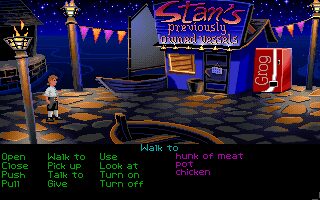Legendary Game Designers: Ron Gilbert
The creator of Maniac Mansion and Monkey Island
![]() By: Tasha S. & Emanuele B.
By: Tasha S. & Emanuele B.
Published: 2 February 2019, 10:31 am
Ron Gilbert has a pretty big claim to fame, and not just for designing video games. He is also responsible for one of the most successful and widely used game engines ever created. Hailing from Oregon, Ron has been interested in learning how to program since he was a kid. Growing up, he used his home computer to attempt to replicate popular games released at that time and used his friends as game test guinea pigs. From these humble beginnings, Ron built his gaming career.
Ron co-wrote his first gaming language in 1983 called Graphics Basic with the help of Tom McFarlane. He loved to program on the Commodore 64, but the Commodore BASIC 2.0 (the one shipped with Vic 20 and C64) lacked several instructions to create graphics and move sprites on the screen. So Gilbert decided to write his own extensions, adding more than one hundred new commands, such as LINE, BOX, and CIRCLE, that made Basic more user-friendly.
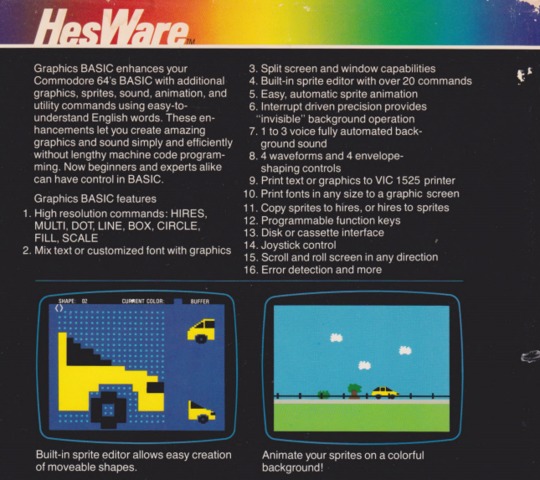
Ron sold the software to a company called Hesware, and he also started working there, trying to develop some arcade games for the C64. Soon after, Hesware ran out of business, and in 1984, Ron had to find a new job. This is how he landed at LucasArts (aka Lucasfilm Games), at the time a small game development studio founded by legendary director George Lucas.
At LucasArts
Ron’s goal was to design his own game, but the first projects at Lucasfilm Games were just the Commodore 64 ports of some Atari 800's games. It was during the port of one of those games, Koronis Rift, that he met the game artist Gary Winnick.
In 1985, Gilbert and Winnick started working on a new idea, a game that would become one of the most popular graphic adventures ever created, Maniac Mansion.Interestingly, Ron didn't know the game was going to be a "graphics adventure" until he saw King’s Quest by Roberta Williams:
That was the first time I had seen any of the King’s Quest games and the first time I had ever seen an adventure game with graphics. ... I just watched him play, and it was like this epiphany moment... Like “Oh, this is what Maniac Mansion needs to be. It needs to be an adventure game with these pictures on it.”It took a while to convince Lucas to give the green light, but finally, they got the approval.
SCUMM
But Ron had a lot of ideas regarding this game, and he realized that to make this game, he had to build his own programming language. This time, not an extension, but something completely new. It was called SCUMM, which, as you may or may not know, stands for Script Creation Utility for Maniac Mansion.
SCUMM was developed to be a tool that converted human-readable commands into byte-sized tokens that then would be read by an executable interpreter program that presented the game to the player.The SCUMM engine allowed for the creation of items, locations, and dialogue that was in a different language than the game’s source code. What this did was make porting games to other platforms much simpler. It also allowed the quick creation of game prototypes based on simple sketches to test ideas before the actual game was developed.
Just for you to know, SCUMM has been so successful that almost 40 games have been created with this language. Maniac Mansion was just the first.
If you would like to know more about SCUMM, I suggest this interesting article published on Gamasutra.
Maniac Mansion
Maniac Mansion was finally released in 1987. Co-designed by Ron Gilbert and Gary Winnick and programmed by Gilbert himself with David Fox, Maniac Mansion was not just Ron’s first game; it was also Lucasfilm Games’ first self-published game.
SCUMM was not a visible thing for the players, but the result was amazing: Maniac Mansion represented a big step ahead in terms of playability. For the first time in a game, the player could click on the verb (e.g., "Open") and then on an object (e.g., a "door") to form actions. This made things much more accessible and pleasant for the gamers.
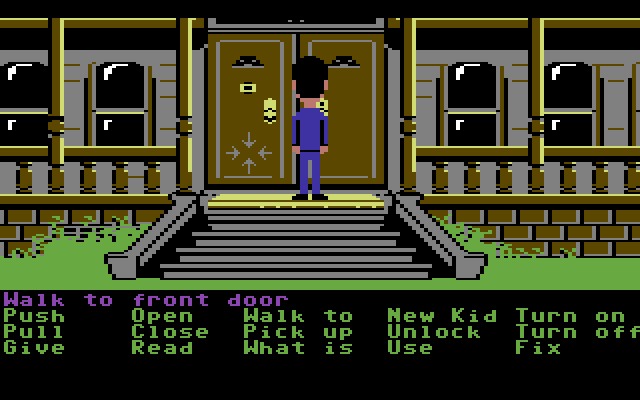
Playing as a young man named Dave, you are tasked with saving your girlfriend from the hands of a mad scientist. Roaming around in his mansion with the help of 2 playable friends, you have to collect items and solve puzzles. Each character has their own abilities and can solve different puzzles using different methods. Your companions can also be snatched by the evil scientist but can be rescued by the remaining characters. The gameplay is open, and your choice of companion changes how the game can be beaten.
Maniac Mansion scored several perfect and high scores upon release. It even snatched up a few awards. There's a fantastic freeware remake of Maniac Mansion if you want to try it.
Zak McKracken and the Alien Mindbenders
The funny adventure Zak McKracken and the Alien Mindbenders was the second game created using the SCUMM engine. The project was directed by David Fox, but Ron Gilbert was part of the design team, and apparently, he played an essential role in defining the mood of the game, adding a lot of humor and inspiration for the creation of all the crazy aliens' theories.
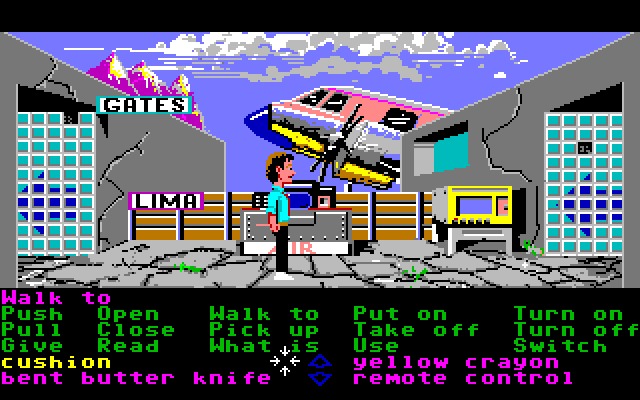
Many experts consider Zak McKracken one of the best adventure games ever made (but some others think it's Monkey Island, see later).
Indiana Jones and the Last Crusade
After Zak McKracken, Ron wanted to work on a new game with a pirate theme, but Lucas asked the team to create a game about Indiana Jones And The Last Crusade, the movie that would have been released in 1989. Made again using SCUMM and designed by Noah Falstein, David Fox, and Ron Gilbert, The Last Crusade would be another groundbreaking Lucasfilm Games release. It added a new gameplay element never before used, a type of point system that gave the game a lot more replayability. Here the points were referred to as Indy Quotient, or IQ for short, and were gained by finding different ways to solve the game’s many puzzles. It was also the first Lucasarts adventure to feature 256 colors VGA graphics.
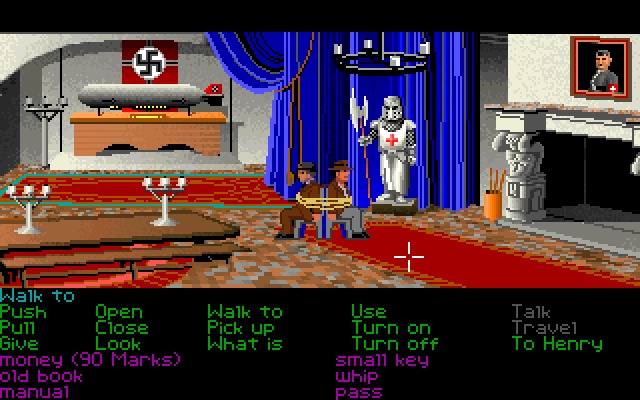
For those unfamiliar with the Last Crusade’s plot, Indiana Jones is enticed into an expedition to uncover the Holy Grail with a promise that it will help him locate his missing father. He goes on his journey and meets a beautiful woman who turns out to be a double agent. He does end up finding his father, and the two team up to discover the greatest treasure of their lives.
The game was a success, but the designers were not completely satisfied. They wanted to do more, but there was not enough time.
Indy got a fantastic sequel in 1992, Indiana Jones And The Fate Of Atlantis, but Ron did not work on this.
Monkey Island Series
During the making of Indiana Jones, Ron continued developing his idea of the pirate game. The inspiration was Disneyland's attraction Pirates of the Caribbean, and a historical fantasy novel called On Stranger Tides, written by Tim Powers.
This is how the idea of The Secret of Monkey Island was born. As you know, here we are talking about a real milestone, a game that started one of the most popular franchises in video game history. Of course, The Secret of Monkey Island utilizes Ron’s earlier written SCUMM game engine again. Stepping into the shoes of a young aspiring pirate with one hell of a name, Guybrush Threepwood, you seek fame and fortune on the seven seas.
With Monkey Island, Ron wanted to bring something new to the adventure games genre. He wrote out a manifesto during the making of the game, a document that has become legendary, whose title is Why Adventure Games Suck. There you can find several considerations about game design, for example, the reason why it should always be possible to go back and get the object that you need to complete the game or why the player should not "die" to learn how to solve a puzzle.Thanks to its sense of humor, brilliant story, and excellent gameplay, The Secret of Monkey Island was a huge success. It's not an overstatement to say that it's not only one of the best but also one of the most famous video games ever created.
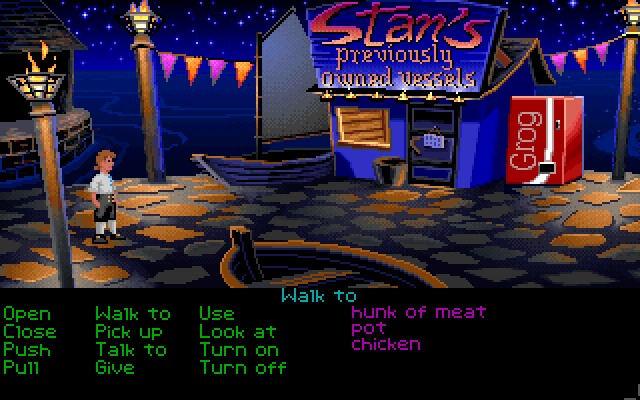
Of course, Monkey Island 2: LeChuck’s Revenge came hot on the heels of the original Monkey Island and continued the story from where it left off. Guybrush, thinking that he has defeated LeChuck once and for all, decides to start his life with his love. The couple heads off to discover one of the greatest treasures hidden on the seven seas but soon finds out that LeChuck’s henchmen are plotting to bring him back from the second death. Like the original, Monkey Island 2: LeChuck's Revenge uses the SCUMM engine, but it also utilizes, for the first time, the iMUSE music technology that helps the music sync up to the gameplay.
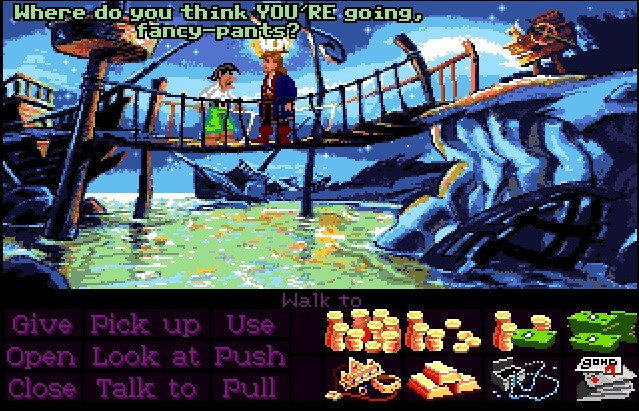
LeChuck’s revenge was exceptionally well received (many reviewers gave it a perfect score of 100%). Monkey Island 2 is used as an example in many game design schools to teach storytelling.
Humongous Entertainment
After his success at Lucasfilm Games, Ron decided to strike out on his own and found his private game company called Humongous Entertainment. His new company focused mainly on making games for a much younger crowd. The company’s first release would be Putt-Putt Joins the Parade in 1992. The game is a puzzle/adventure game geared more toward children. Putt-Putt originated from a book series written by Shelley Day, and Putt-Putt Joins the Parade saw many a sequel following its successful release.
Ron’s company would also create franchises for many other loveable characters like Fatty Bear, Freddi Fish, and Pajama Sam. He would also create a “Let’s Explore” set of games that feature an Airport, Farm, and Zoo.
Total Annihilation
Just three years into his Humongous Games career, Ron decided to create a sister company that focused on more mature games called Cavedog Entertainment. At Cavedog, Ron produced Total Annihilation, the famous real-time 3D strategy game designed by Chris Taylor.
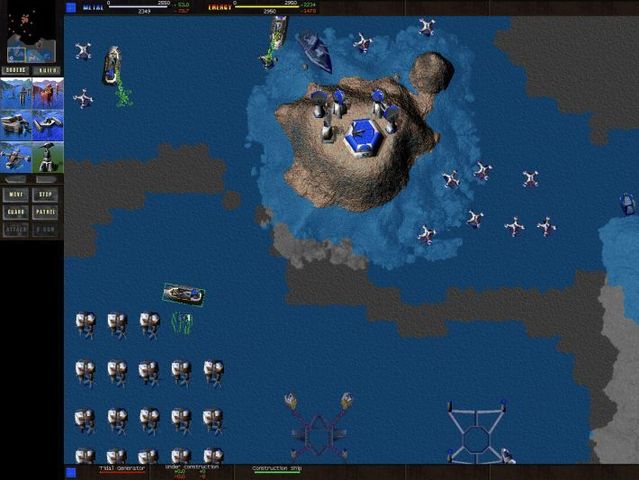
The first Total Annihilation did very well and led to several sequels. By 1999 Ron and his company began working on a game called Good & Evil, but it was ultimately canceled when the Cavedog went under. After that, Ron decided to stay out of the games business for a while.
Penny Arcade
In 2008 Ron became the Creative Director for a company called Hothead Games. While there, he would work on Penny Arcade Adventures: On the Rain Slick Precipice of Darkness Episode One and Two. I’m quite a fan of the Penny Arcade online comic series. I got into it during my time spent dating men from Kentucky. Apparently, it’s big in Kentucky. But I digress.
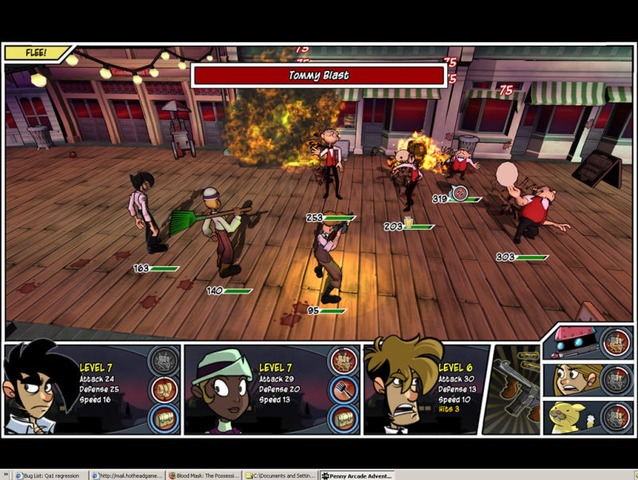
In 2009 he would get a chance to go back to his work on Monkey Island for Telltale games in the form of a game dubbed Tales of Monkey Island, the fifth release in the Monkey Island series, featuring old Threepwood Guybrush as the main character. Since defeating LeChuck, Threepwood accidentally unleashed a plague upon the world and now has to figure out how to cure it. The game is done in true Monkey Island style and keeps the exploring and puzzle-solving gameplay intact, as well as the playful humor.
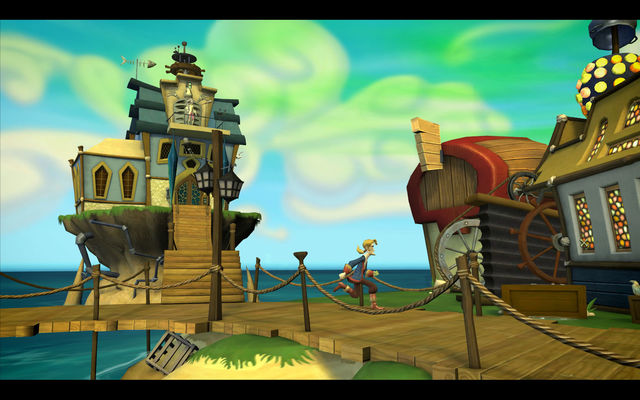
After resurrecting his well-known franchise, Ron would co-create the popular title DeathSpank with Clayton Kauzlaric.
Thimbleweed Park
Ron Gilbert and Gary Winnick reunited to create Thimbleweed Park, which is another throwback to Ron’s early projects, Maniac Mansion, and Monkey Island. In this particular title, you play as a pair of FBI agents who are on the scene to investigate a murder. All is not as it seems in the little town, and there are quite a few interesting characters to discover. The story branches into the strange, and the townsfolk soon find that they are trapped within a video game, your characters included. You must find a way to end the game and save the town. Ron funded this project using Crowdfunding and was able to release it in 2017.
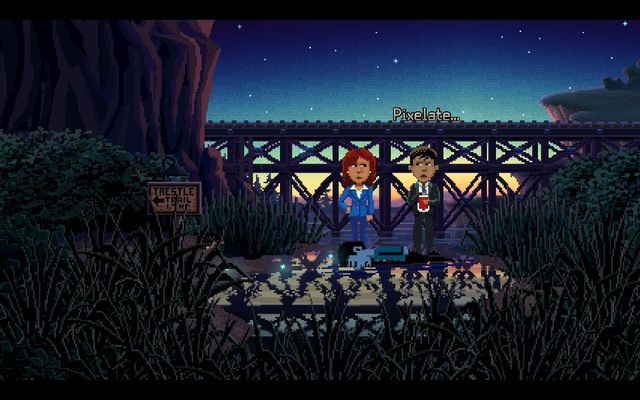
Thimbleweed Park is a fantastic game, rich in humor and with fabulous pixel-art graphics created by Gary Winnick and a young artist called Octavi Navarro. If you haven't done it yet, I strongly suggest you buy this game asap!
Ron has enjoyed a long and prosperous career in his time. In fact, it's so long that we have to skip something. Otherwise, this article would have become a book. Sorry if you think we missed some important pieces. Remember that you can follow Ron Gilbert's blog Grumpy Gamer, and you can also follow him on Twitter using @grumpygamer.

